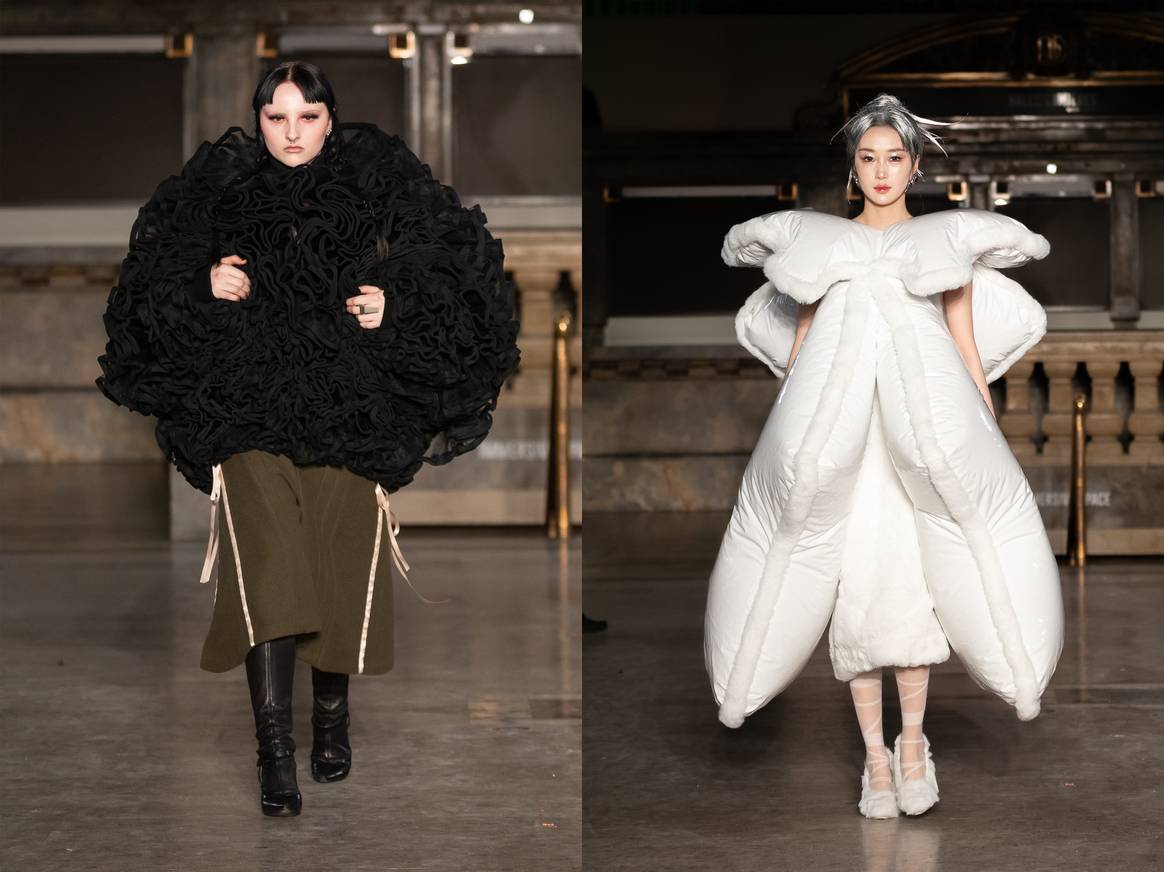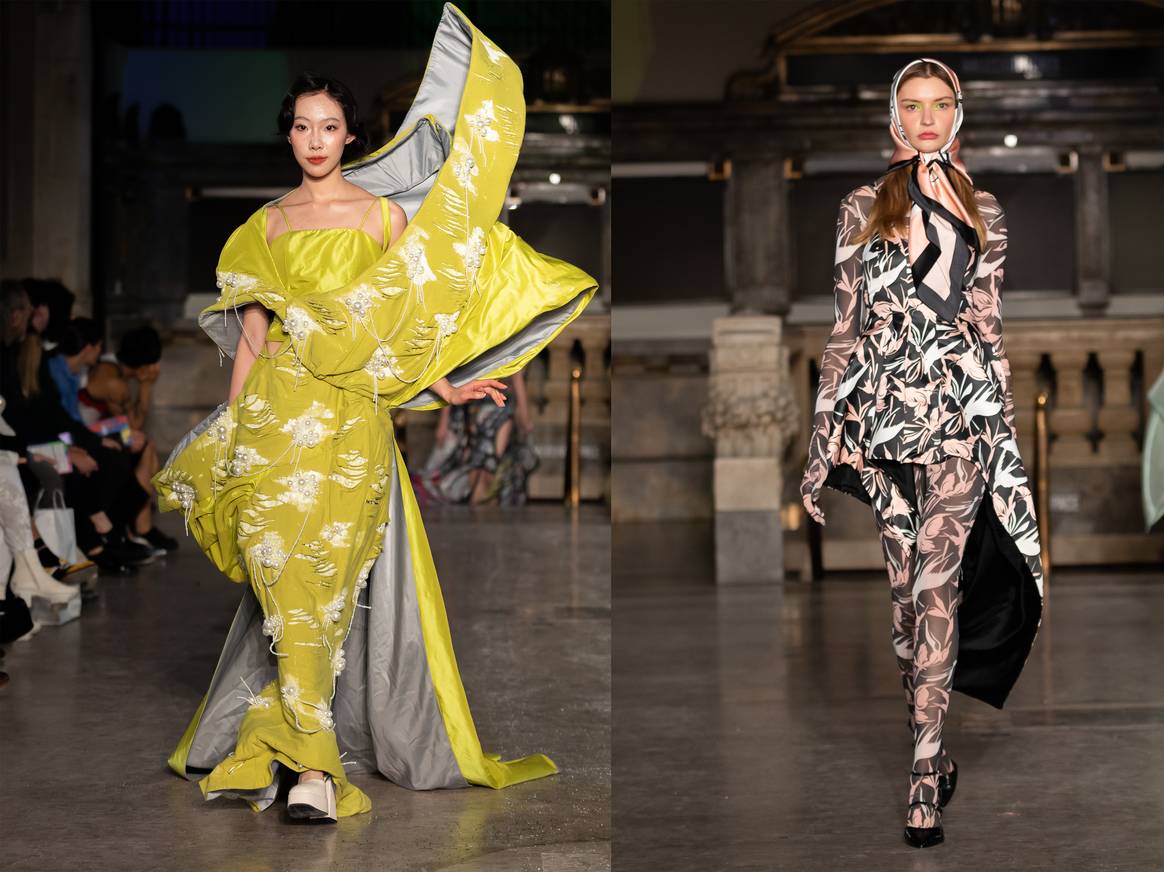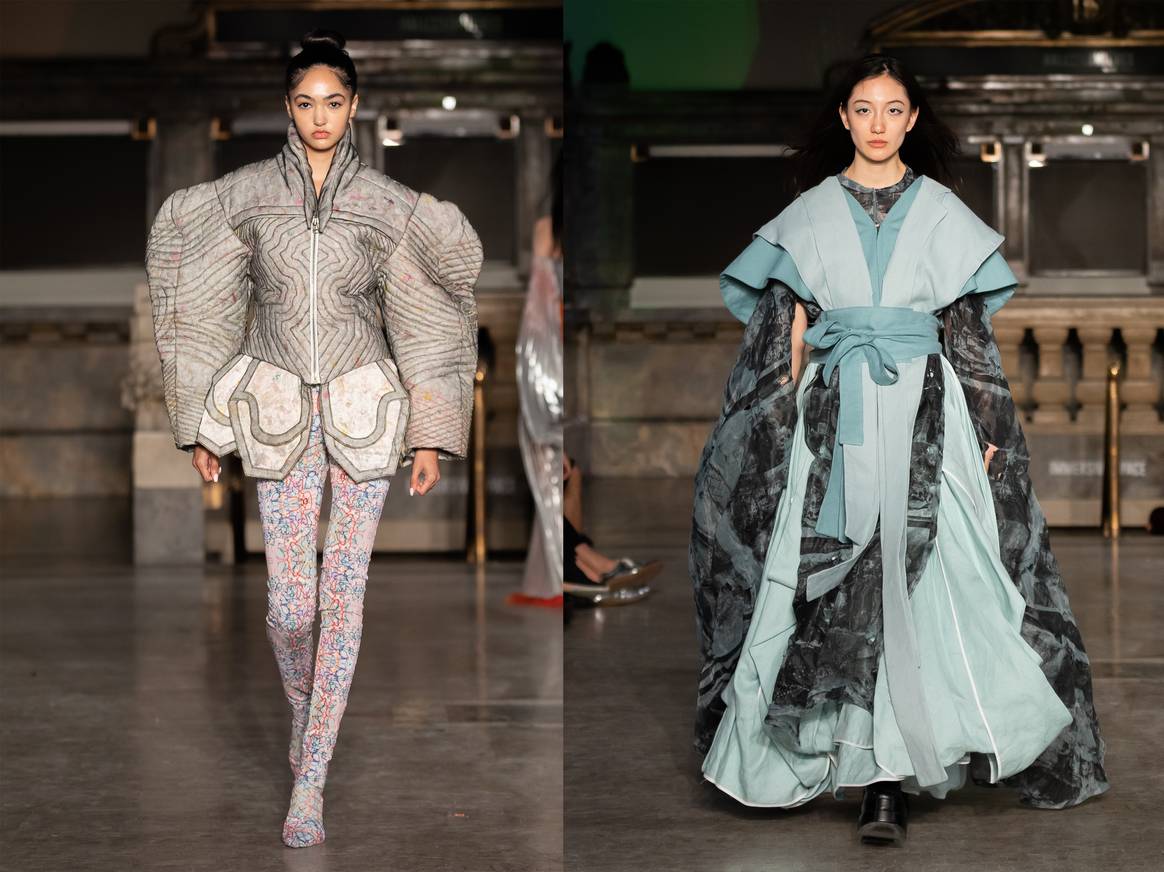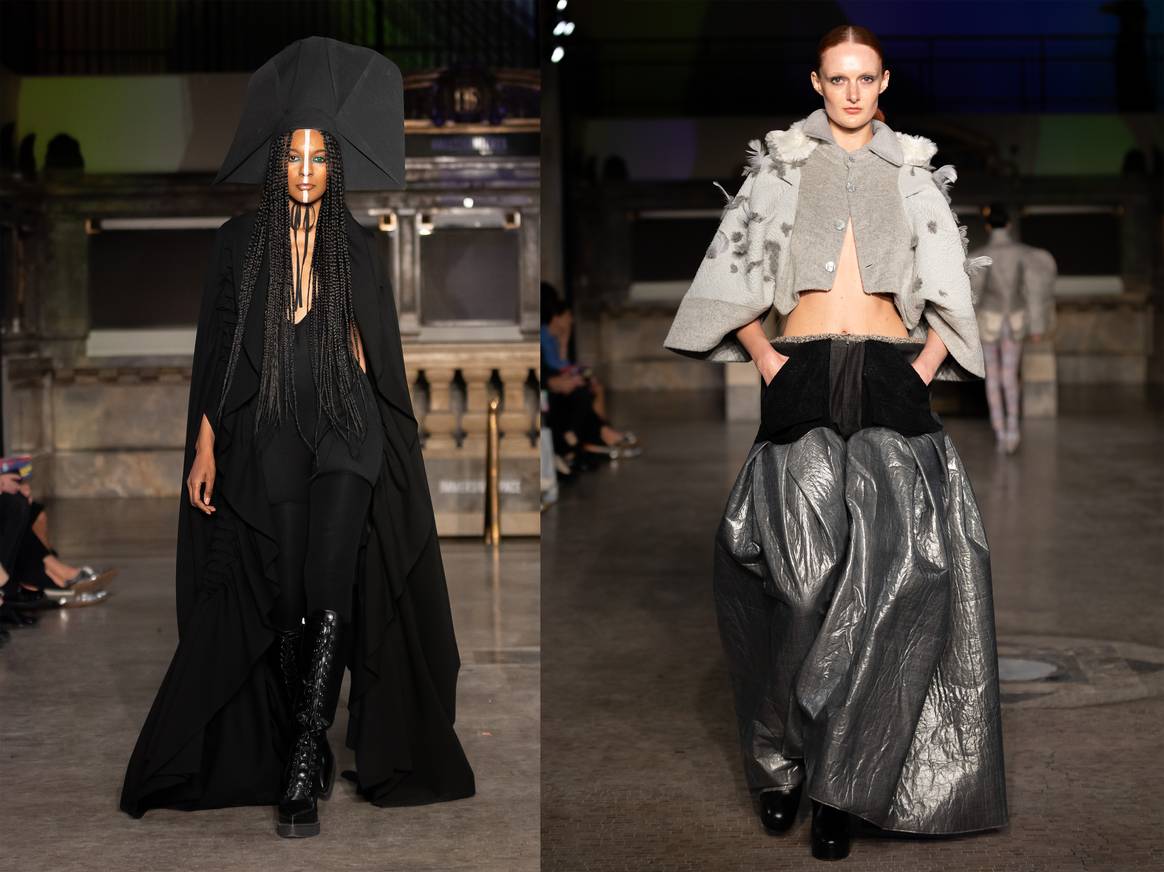Engaged in the clothing industry for 20 years.

Parsons changes it up for BFA Synergies graduate fashion show
Parsons tried something different this year for their BFA fashion show held in the august Hall Des Lumières in lower Manhattan. In the spirit of inclusivity that has become a core principle of the school’s pedagogy, especially since Ben Barry became Dean of the School of Fashion in 2021, the runway presented one look from every single graduating senior. That added up to 217 exits from across the five pathways of Collections, Fashion Product, Materiality, Systems and Society, and Phygital Fashion. It was announced as its biggest show ever.
Writing as someone who didn’t get selected for their graduate show back in the day, and remembering the disappointment that hung around for years, making runway space for every tuition-paying creative sounds correct, in theory, to this author. However in practice it made for a difficult viewing experience and required more patience than is typically expected from the restless runway audience. When every model is marching to the beat of their own drum, it leaves no opportunity for individual storytelling; there are no interconnecting motifs that build from one look to the next. If an intriguing textile is shown in a dramatic silhouette it is satisfying to see how it behaves in other contexts, draped instead of pleated, say, or on a different part of the body, or in a new color.

But thankfully I had visited the Synergies: 2024 BFA Fashion Design Graduate Exhibition the previous Wednesday, a showroom style opportunity to meet all the graduates and view their garments, portfolios and learn of their processes. The exhibition was laid out across multiple rooms, each one divided by themes such as Earthy, Urban Warrior, Whimsical and Romantic Fantasy, and these themes also seemed to inform the sequence of the show. While it is always a joy to explore the graduate exhibition, this year spotting some of that work on the runway served like a port in a storm.

Memories, both bad and good, came up often as sources of inspiration. Former dancer, Victoria Henderson, stitched together the experience of growing up in the Christian church, an early ballet career, and Victorian torture devices to create corseted military looks and a cocoon of densely worked ribbon that concealed the torso from chin to hip. Shulin Song’s collection entitled “Taste of the Past” took inspiration from exploring the cherished times spent with their grandma cooking and their sumptuous pearl encrusted textiles were inspired by spilt flour, sauce stains, while the form of a simple kitchen apron was reworked to the extreme.

The wistful beauty of Julie Gu’s beadwork pieces worn with chartreuse crushed velvet, inspired by stained glass windows typical of small-town China, was lost in a single runway look but when observed up close the dainty lacework and delicate shimmering fringes were poetic. Nicole Chen explored the elusiveness of emotions through charmingly disparate textiles -white clouds of felt and organza, a dense floor length dress that conjured up images of a big green field and garments that morphed into other garments or appeared to levitate around the body. Impermanence and flux were also the basis for Jiaohan Lin’s moody screenprints and frayed garments reflecting the experience of constantly saying goodbye to people, places and things, while the durability of ancient Chinese paper was pushed to pretty yet aggressive limits in Chaejin Yoon’s masterful interpretations of traditional armor.

Jerome Cheung collects artifacts, crumpled letters and documents marked by the passage of time and the designer sought to merge that nostalgic tactility with the surface qualities of nature and the built environment, lining wool herringbone with wax paper, concrete coating vests, covering a coat in beach sand and drilling holes in stones to use as buttons.

There was a fair amount of spiky anarchy and black on black solemnity. But in the case of Huayi Klori Yang’s collection of draped floor-length looks with woven details and almost clerical-looking headdresses it heralded a new femininity exploring the mystery and power of the witch. Channeling the whimsy and imagination of childhood, Greta Yang’s Tm-Walker inspired kidswear proposed a dress with built-in shadowbox containing miniature furniture floating about a room.

The illustrations of student Leo Qian were a delight projected onto the walls of the space as well as in a head-to-toe printed outfit. The presentation of accessories on the runway was particularly successful because the models could wear or carry the entirety of a collection. Yaki Dai’s rings and necklaces wound sensuously around the hand and neck, sparkling against an outfit of black while the stylish curves and two-toned color ways of Dortha’s bags swinging two or three per arm had this reviewer dreaming of being so chicly weighed down while on the go this summer.


